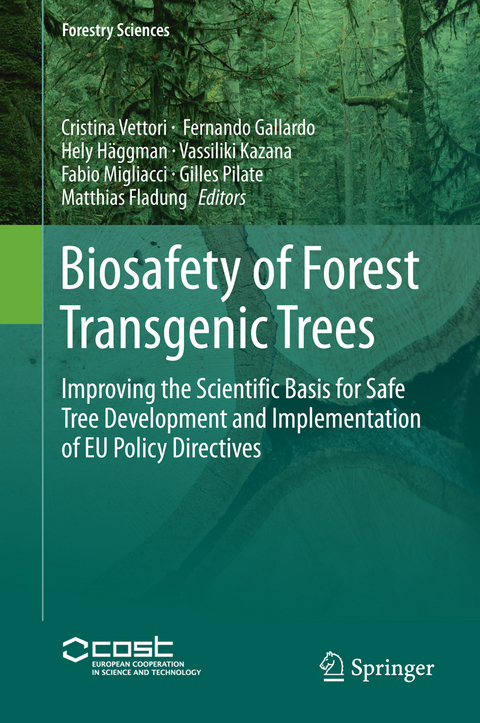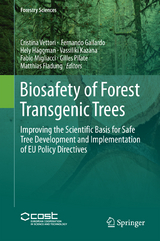Biosafety of Forest Transgenic Trees
Springer (Verlag)
978-94-017-7529-8 (ISBN)
Introduction.- Genetic engineering – contribution to forest tree breeding efforts.- New transformation technologies for trees.- Lessons from 25 years of GM tree field trials in Europe and prospects for the future.- Lessons from two decades of field trials with genetically modified trees in the USA: Biology and regulatory compliance.- Specific environmental considerations for GM trees and guidance on their risk assessment and monitoring.- Field trials with GM trees: A step-by-step approach.- Soil effects of genetically-modified trees (GMTs).- Potential Environmental Impact of Insect-Resistant Transgenic Trees.- Potential impacts of GM trees on the environment and on plant “omics”: questionnaire-based responses.- Approaches and tools for a socio-economic assessment of GM forest tree crops: Factors for consideration in Cost-Benefit Analyses.- Public knowledge and perceptions of safety issues towards the use of genetically modified forest trees: A cross-country pilot survey.- A COMPARATIVEANALYSIS OF CONSUMERS’ POTENTIAL PURCHASING BEHAVIOUR TOWARDS TRANSGENIC DERIVED FOREST PRODUCTS: THE GREEK CASE.- Socio-economic considerations for decision making on GM tree cultivation.- Value communication in the field of agri-food.- The COST Action FP0905 experience on the Web: Web 2.0 and scientific dissemination.
| Erscheinungsdatum | 03.03.2016 |
|---|---|
| Reihe/Serie | Forestry Sciences ; 82 |
| Zusatzinfo | 33 Illustrations, color; 7 Illustrations, black and white; XVII, 337 p. 40 illus., 33 illus. in color. |
| Verlagsort | Dordrecht |
| Sprache | englisch |
| Maße | 155 x 235 mm |
| Themenwelt | Naturwissenschaften ► Biologie ► Botanik |
| Naturwissenschaften ► Biologie ► Ökologie / Naturschutz | |
| Sozialwissenschaften ► Soziologie | |
| Technik ► Umwelttechnik / Biotechnologie | |
| Weitere Fachgebiete ► Land- / Forstwirtschaft / Fischerei | |
| Schlagworte | Biosafety • EU Policy • Safe tree development • Transgenic • Trees |
| ISBN-10 | 94-017-7529-X / 940177529X |
| ISBN-13 | 978-94-017-7529-8 / 9789401775298 |
| Zustand | Neuware |
| Haben Sie eine Frage zum Produkt? |
aus dem Bereich




